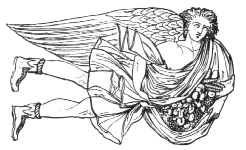This article needs additional citations for verification .(January 2018) (Learn how and when to remove this template message) |
This article includes a list of references, but its sources remain unclear because it has insufficient inline citations .(January 2018) (Learn how and when to remove this template message) |
Zulu mythology contains numerous deities commonly associated with animals or general classes of natural phenomena. Unkulunkulu is the highest God and is the creator of humanity. [1] Unkulunkulu ("the greatest one") was created in Uhlanga, a huge swamp of reeds, before he came to Earth. Unkulunkulu is sometimes conflated with the Sky Father Umvelinqangi (meaning "He who was in the very beginning"), god of thunder and earthquakes. Another name given for the supreme being is uThixo.
Unkulunkulu (/uɲɠulun'ɠulu/) is the Supreme Creator in the language of the Zulu people.

Earth is the third planet from the Sun and the only astronomical object known to harbor life. According to radiometric dating and other sources of evidence, Earth formed over 4.5 billion years ago. Earth's gravity interacts with other objects in space, especially the Sun and the Moon, Earth's only natural satellite. Earth revolves around the Sun in 365.26 days, a period known as an Earth year. During this time, Earth rotates about its axis about 366.26 times.
UMvelinqangi is an IsiZulu word which translates to the Most High or Divine Consciousness; that is considered the source of all that has been, that is and all that ever will be. UMvelinqangi contrary to widespread belief is not personified(not made to seem like a person or external being). Umvelinqangi is most accurately described as the inner light of creation. Ukukhothama(meditation) was a widespread practice prior westernisation among the Zulu clan. Ukukhothama was seen as a way of attaining ubunye noMvelinqangi(oneness with the divine conscious), This practice is primarily the reason why the amaZulu clan survived through the ages without any form of western/modern resources.
Contents
Other deities include Mamlambo, the goddess of rivers, and Nomkhubulwane, sometimes called the Zulu Demeter, who is a goddess of the rainbow, agriculture, rain and beer (which she invented).
Mamlambo is a deity in South African and Zulu mythology, the "goddess of rivers", described as a large snake-like creature.

A goddess is a female deity. Goddesses have been linked with virtues such as beauty, love, motherhood and fertility. They have also been associated with ideas such as war, creation, and death.

A river is a natural flowing watercourse, usually freshwater, flowing towards an ocean, sea, lake or another river. In some cases a river flows into the ground and becomes dry at the end of its course without reaching another body of water. Small rivers can be referred to using names such as stream, creek, brook, rivulet, and rill. There are no official definitions for the generic term river as applied to geographic features, although in some countries or communities a stream is defined by its size. Many names for small rivers are specific to geographic location; examples are "run" in some parts of the United States, "burn" in Scotland and northeast England, and "beck" in northern England. Sometimes a river is defined as being larger than a creek, but not always: the language is vague.






